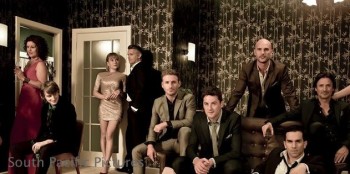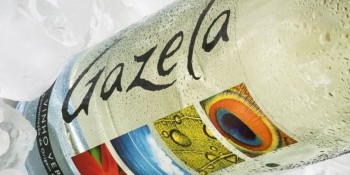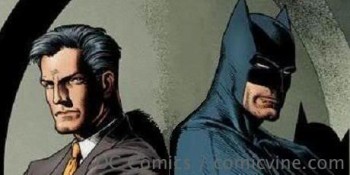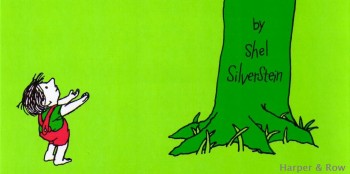Earlier this week, I was talking with a friend about how full my DVR had become, and how many recording conflicts I had. That’s when I realized I watch nearly as much television during the summer as I do during the normal TV season. This may not seem like a surprise to everyone, but I can still remember a time when there wasn’t anything interesting on television over the summer. Summer was the time for playing outside or watching reruns, not catching up on last night’s new television.
I remember when this changed, during the summer between my junior and senior years of high school. That was the year Survivor premiered and changed the landscape of summer television. Suddenly, everyone was watching. When school started back up in the fall, that was all anyone talked about. I have never been a reality TV fan and, to date, have only watched two full seasons of Survivor, but even then it was clear that a cultural shift was taking place — not just in relation to reality TV. Survivor proved that people will watch original programming in the summer.
Fast-forward to the present day and there are a lot of shows that air only in the summer, with networks debuting more and more original summer programing each year. Not only are these shows popular, but some of them are actually quite good. This summer, there is a wide variety of original programming that is keeping my DVR busy.
For the most part, I like my summer shows to be like my summer reading lists: fun, clever, sometimes quirky, with a sense of humor — not too dark. I don’t hold standards as high for the shows I watch in the summer as I do throughout the rest of the year. I’m much more inclined to watch feel-good or guilty-pleasure TV in the summer. I just want to sit back and relax and enjoy what I’m watching, not get drawn into a complicated and dramatic plot that knots me up in suspense for an hour.
As far as television goes, it’s not really summer until the new season of Royal Pains airs on the USA Network. I’m a fan of a lot of USA’s original programming, but Royal Pains, to me, is the definition a good summer show. It’s bright and colorful with a great cast, and it rarely gets too serious. For those unfamiliar with the series, it’s about a doctor who sets up a concierge medical service in New York’s Hamptons. Sure, the plots are often superficial, but that’s what makes it a good summer show. When I’m at the beach, I’d much rather be reading Jen Lancaster than Anna Karenina, and the same goes for television.
Another USA show I look forward to each summer is Covert Affairs. Though the series has taken a little bit of a darker turn over the last couple seasons, it’s still one of my favorite shows to watch during the summer.
If you like the novels of Debbie Macomber and are a fan of Hallmark movies, then you may enjoy Cedar Cove, which makes its second-season debut Saturday night on the Hallmark Channel. The series is about a small-town judge and her community. The show stars Andie MacDowell and Dylan Neal, but you’ll likely recognize other members of the cast as well, especially if you’re an avid viewer of sci-fi television. There isn’t a lot of action — the show is basically a weekly hour-long Hallmark movie — but it has just the right amount of sappiness to be enjoyable, especially for a summer series.
If Norse mythology and fantasy are more your thing, you may want to check out The Almighty Johnsons, airing Friday nights on Syfy. The show is the story of the Norse gods, who have been reincarnated in New Zealand (where the show originally aired). The show has a lot of humor and adventure, and Hobbit fans may recognize Dean O’Gorman, who plays one of the Johnson brothers, Anders. I’ve already seen every episode of this series and I love it; I’m so excited it’s finally airing in the United States. The series just premiered Friday night, so there’s plenty of time to get caught up.
One of this year’s new offerings that I decided to give a chance to was NBC‘s The Night Shift, about the late-night workers in an emergency room in Texas. I am not a fan of medical dramas per se, but I am a big fan of Eoin Macken, one of the stars of The Night Shift. (Merlin fans may recognize him as Gwaine, one of the Knights of the Round Table.) The series drew me in almost immediately with its quirky humor and terrific cast. Aside from Macken, the series also features Jill Flint, who used to star on Royal Pains, Brendan Fehr, better known for his role in Roswell, Ken Leung of Lost, and Scott Wolf.
Of course, I have discovered that The Night Shift drew me in with the cast and the humor, made me think it was going to be a fun summer show, and then hit me over the head with drama and suspense in the last three episodes of the season. It’s something viewers maybe should have expected, given the fact that T.C. Callahan, the lead character played by Macken, suffers from post-traumatic stress disorder after his time in Afghanistan. The series just wrapped up its eight-episode first season Tuesday night, but it will be back for a second season next summer. I would definitely recommend giving it a chance.
Another great new offering is MTV‘s Finding Carter, which premiered last week. The show follows 16-year-old Carter, who learns the mother she grew up with actually kidnapped her 13 years before. Carter is forced to return to her biological family whom she does not remember and a mother who is intent on tracking down the kidnapper. From what I’ve seen of this show so far, it is very well done, with a great cast and compelling characters. Cynthia Watros is brilliant as Carter’s biological mother, and I love having Alexis Denisof, who plays Carter’s father, back on my television weekly. MTV has once again surprised me by proving it’s capable of producing quality television.
I’m even less a fan of soap opera-y television than medical dramas. However my tolerance for that genre increases during the summer months. Maybe it’s nostalgia, as I can remember spending many summer afternoons, sitting in my grandmother’s living room, watching her “stories.” Summer just seems like as good a time as any to indulge in a little guilty-pleasure soapy viewing. (Perhaps if One Tree Hill or Dawson’s Creek had aired in the summer, I wouldn’t have given up on them.)
This summer’s guilty pleasure show is Lifetime‘s Witches of East End. I passed on it last summer, but a friend convinced me to give it a chance, so I found it streaming on Netflix this past weekend. Before I knew it, I had watched the entire first season and the second-season premiere. The show is definitely soapy and melodramatic, but I like the characters, especially Madchen Amick‘s Aunt Wendy. I also like that the show doesn’t take itself too seriously. The first episode mocked the cliché of girls finding out they’re witches, when matriarch Joanna was forced to reveal the truth to her older daughter, Ingrid. Witches of East End is a little more dramatic than my usual preference for summer viewing, but it’s actually much less dark than several other must-see shows on my summer viewing list.
I’ve already talked about how much I love Teen Wolf in a previous column. Despite its dark tone and suspenseful storylines, it’s definitely one of my favorite summer shows. Along similar lines, True Blood has been a can’t-miss series for me since its first season. The novels on which the show is based are the perfect summer reading book: not too serious or dark, with some amount of humor. The TV series, however, is much darker — and also much better than the books. I’m going to miss this show when it ends its run next month, and I’m sad that we’re already saying goodbye to some of my favorite characters. Like Witches of East End, True Blood has just the right amount of soapy melodrama to make it a good summer show.
Enough talking — I have plenty of TV filling up my DVR this summer. So, what shows have you been watching?











